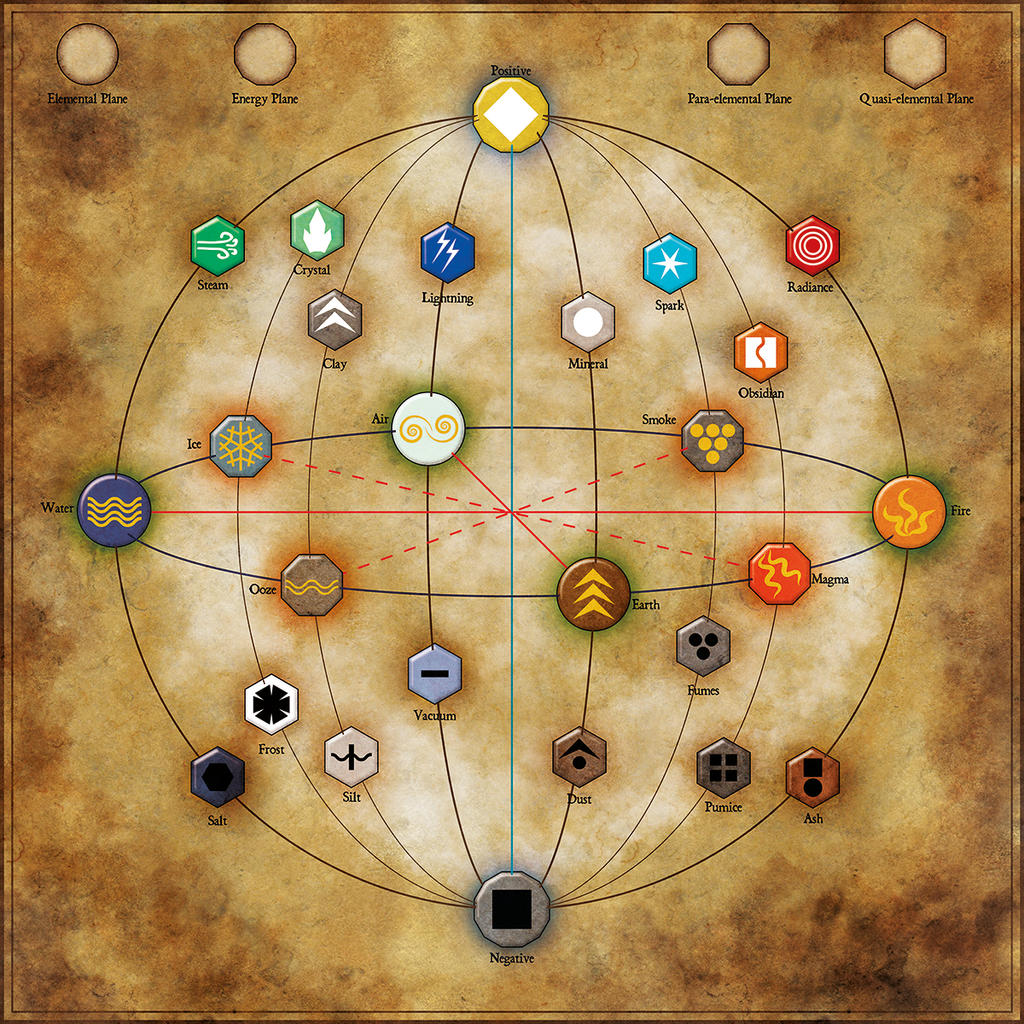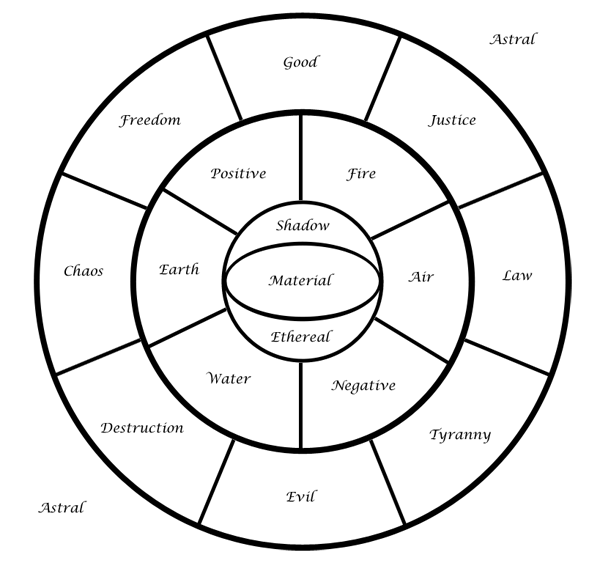I previously mentioned the Aristotelian/Dantean cosmology of celestial spheres. The OD&D game took inspiration from the concept when it developed its
Mystaraspace cosmology, which would go on to inform the cosmology of
Spelljammer. This cosmology was also adopted (or adapted) by retroclones including
Blood & Treasure,
Dark Dungeons, and
Voidspanners. The specifics and jargon vary between settings, so I'll be using
Dark Dungeons as my primary reference here.
The basics
In contrast to the Aristotelian/Dantean cosmology, the celestial spheres are much simplified in this model and take further inspiration from the
obsolete scientific theory of ether and modern astronomy; it is unique as far as cosmography models go. The solar system generally behaves much as its does in reality, with the planets orbiting the sun (although some systems may be geocentric or weirder). However, Aristotle's firmament of the fixed stars remains as the sole celestial sphere ("crystal sphere" in D&D jargon). The interplanetary space inside the sphere is an empty "void"; unlike real physics, living creatures have sufficient personal gravity to carry a small supply of air and aren't in any danger of a zero pressure environment. The space and planets within the celestial sphere is mirrored in each of the adjacent inner planes (air, earth, fire, water, ether), which are called "inner planes" because they all exist within the sphere. Outside of the sphere is the luminiferous aether, which is the equivalent of interstellar space. Other celestial spheres containing their own planetary systems exist throughout the luminiferous aether.
Space travel is generally accomplished using spacecraft that are powered by magitech or exploit quirks of the fantasy physics, such as through engines, sails, or other means of propulsion. These vessels are generally modeled after sailing ships, and may even be capable of doubling as sea ships and/or airships.
The OD&D and AD&D games differ greatly when it comes to depicting the outer planes. In the original celestial spheres cosmology, outer planes aka demiplanes were artificial spheres created by the immortals (mortals ascended to divinity) that were anchored to a celestial sphere. In AD&D's
Manual of the Planes, the outer planes became independent of the celestial spheres cosmology entirely; when it was retrofitted later as
Spelljammer, redundancies were introduced such as the distinction between the "phlogiston" (luminiferous aether) and the deep ethereal plane.
One wonders whether
Disney's Treasure Planet was influenced by the game.
Simple variations
Blood & Treasure and
Voidspanners put their own spins on this basic model. Both settings are closer to the original Aristotelian Universe in that their universe does not extend beyond the firmament, as opposed to having multiple such spheres emulating real star systems. Both settings diverge when it comes to the nature of the planets, however.
In
Voidspanners, the system is heliocentric and the planets may be visited and traded with as per the
Dark Dungeons model. Furthermore, the void is full of breathable ether; although prolonged exposure may still be harmful. Overall, the differences from the standard model are minor. As a supplement for
Basic Fantasy, no rules for the other planes' geography are included.
In
Blood & Treasure, the celestial sphere model is combined with the "orrery" or "solar system" model mentioned in the guides for designing your own planar cosmology. Here the planetary system ("Land of Nod") is geocentric and the transitive, inner and outer planes are presented as concentric spheres and associated planets: the ethereal plane corresponds to the lunar orbit, the astral plane corresponds to the space beyond, the inner planes correspond to the inner planets and the outer planes correspond to the outer planets. Taking a further page from Dante, Hell is located inside the earth and Heaven corresponds to the surface of the firmament.
Since these settings are limited to single systems, it is possible for them to be integrated into the basic model by presenting them simply as quirky spheres floating within the luminiferous aether. IIRC, the D&D canon cosmology uses similar logic to explain the cosmological differences between the different official campaign settings: each celestial sphere may have its own set of planes that aren't necessarily the same as those of other spheres.
On another note, the surface of the celestial sphere is comparable to the outer plane "
The Vault of Stars" from 3pp
Classic Play: The Book of the Planes. If you want to have adventures on the literal night sky, then I highly recommend using that book (not that I found any alternatives, mind you).











